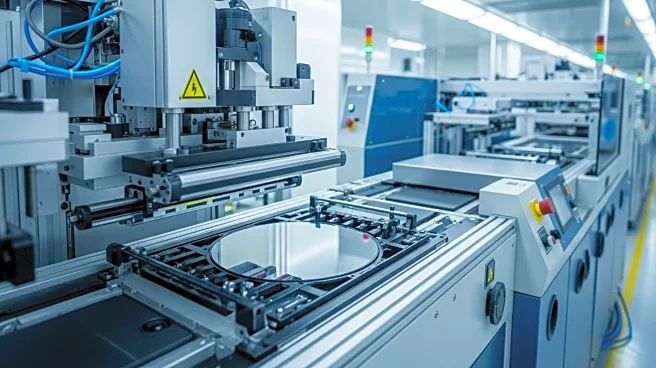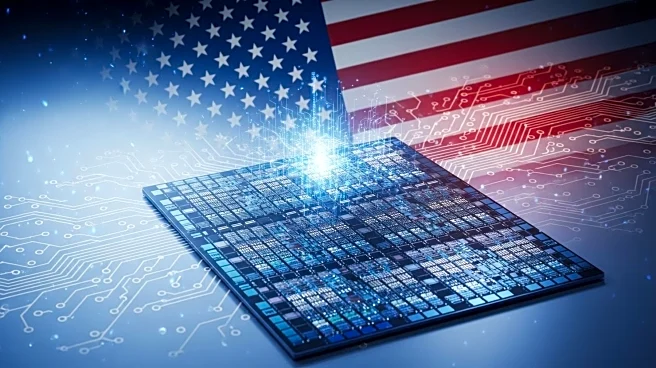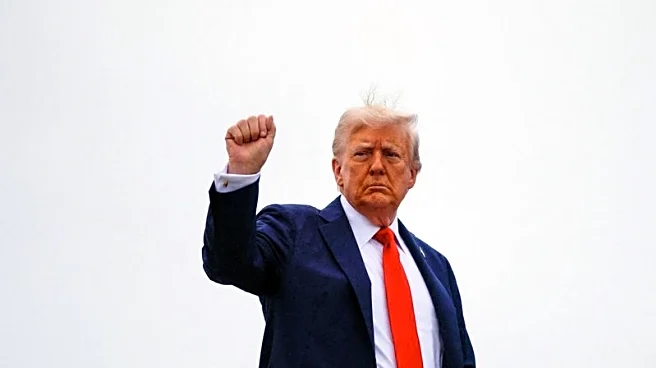What's Happening?
The Trump administration is reportedly considering a policy that would require U.S. semiconductor companies to produce an equal number of chips domestically as they import from overseas. This 1:1 ratio approach aims to increase domestic semiconductor manufacturing. Companies failing to meet this ratio could face tariffs. The timeline for achieving this ratio is not specified. President Trump has been discussing tariffs on the semiconductor industry since August. The initiative is part of a broader effort to reduce reliance on foreign suppliers and enhance U.S. manufacturing capabilities. However, the plan could initially harm the U.S. chip industry until domestic production can meet demand. Intel's Ohio plant, for example, has faced delays and is now expected to open in 2030. Meanwhile, Taiwan Semiconductor Manufacturing Company (TSMC) has committed $100 billion over four years to build infrastructure for U.S. chip production.
Why It's Important?
The proposed policy could significantly impact the U.S. semiconductor industry, which is crucial for various sectors, including technology and defense. By imposing tariffs on companies that do not meet the production ratio, the administration aims to incentivize domestic manufacturing. However, this could lead to short-term disruptions as the industry adjusts to new production requirements. The policy reflects broader economic strategies to bolster U.S. manufacturing and reduce dependency on foreign imports, aligning with national security interests. Companies like TSMC investing in U.S. infrastructure could mitigate some negative impacts, but the transition period may pose challenges for the industry.
What's Next?
If implemented, the policy could lead to increased investment in U.S. semiconductor manufacturing facilities. Companies may need to accelerate their domestic production capabilities to avoid tariffs. The industry could see a shift in supply chain dynamics, with potential implications for pricing and availability of semiconductors. Stakeholders, including industry leaders and policymakers, will likely engage in discussions to address the challenges and opportunities presented by this policy. The outcome could influence future trade and economic policies related to critical industries.











